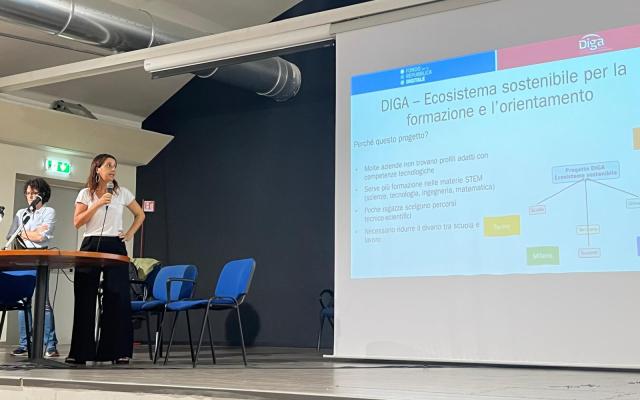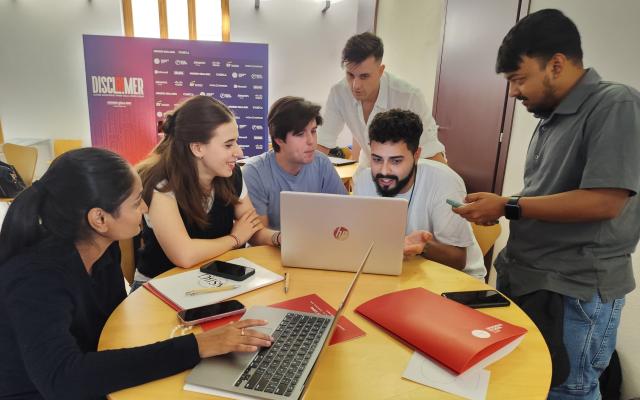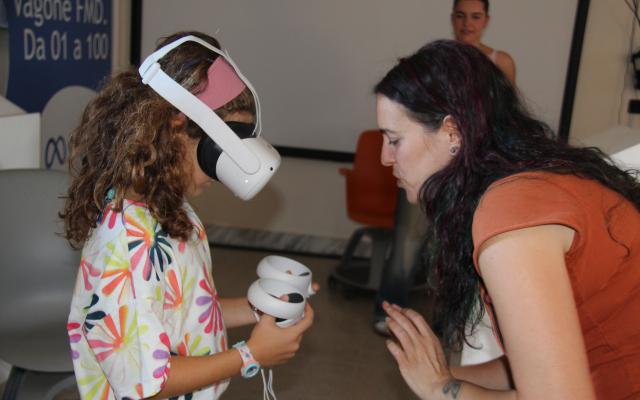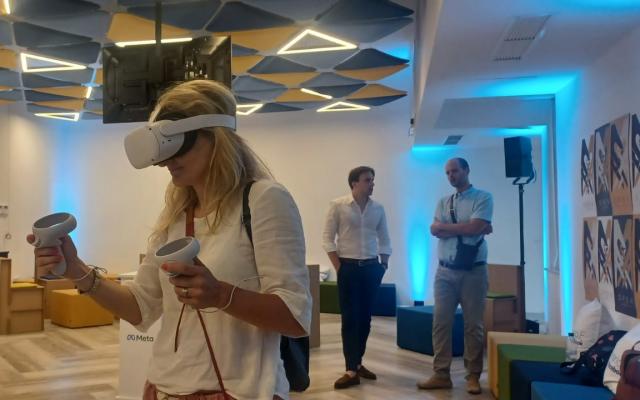Vagone FMD: A review of the last meeting at Binario F
Artificial intelligence, augmented reality and the metaverse are already offering new models, not only for business, but for fashion and related initiatives, such as showrooms and fashion shows. For some time now, numerous brands have forayed into the metaverse, presenting various types of projects and initiatives. The issue was addressed in yesterday's session of Programme Vagone FMD. From 01 to 100 in the Metaverse, dedicated to fashion. Here are the main ideas that emerged in Onelia Onorati's summary.
INTRODUCTORY SESSION
Gianluca Polegri, Director, Digital Solutions Engineering. The metaverse does not exist yet as a single reality. We have reiterated this several times, which is why there are still many people who are sceptical about its future. Engineering is an Italian company that helps partners address digital transformation, with a very specific strategy and vision on the evolution of digital services. Currently, the metaverse is the application of several interoperable technologies in a single environment. It will certainly take some time to see its evolution. Since we started this journey in October, I have noticed a polarization between sceptical interlocutors and others who are overly optimistic; however, there is a certain path set before us. I find an increasingly less sceptical attitude, one that is more interested in the metaverse. Actors operating in energy, utilities, healthcare, transportation, and public administrations have already turned to us with concrete interest. After all, technology has zoomed ahead. Just one year ago, there was no widespread understanding of what the metaverse is and distant solutions such as “Second Life” were used as examples. Today, people are already able to make very sophisticated choices. The metaverse represents an evolution, it is true, but the metaverse ecosystem is somehow a "living" reality because it does not reset between experiences. The metaverse ages due to the actions of other people, who experience it even when offline. So, one of its characteristics is its interoperability.
Antonio Franceschini, National Manager, CNA Federmoda. We are trying to work with a view to certification and transparency in the supply chain. We don't want SMEs to lag behind in terms of innovation. We want to be among the first to innovate. Legal aspects, copyright, brand enhancement are the topics on which technology can act as a facilitator. Currently there have already been some experiences. We are not starting from scratch because we have always wanted to be recognizable as a fundamental component in the growth of the country.
Doriana Marini, co-founder, DienPi. We work with entrepreneurial realities of various sizes and nature in the fashion world, many of which are linked to young entrepreneurs. We have launched a label to fight counterfeiting, with the requirement that it be washable and capable of providing traceability content, for supply chain transparency. The labels contain an NFC tag that allows information to be displayed on a smartphone. One of the products on which we apply the label is the “galva croc,” a jacket woven from fine leathers with digital technology. In some cases, these jackets are treated with designs to appear as crocodile, sometimes they are hand painted. An online configurator allows you to design your own model, with a label containing a tag that can be read with a smartphone. Each jacket also has its digital equivalent. In recent weeks, we have been working on implementing artificial intelligence in production, so that 3D models can wear the clothes to facilitate their creation. Thanks to the collaboration between several companies, we would like to make these services available to all SMEs.
Giulio Brandimarti, CEO, Solidity2. I consider myself a visionary and together with Doriana Marini I have carried out a particular project. We have created a connection between physical and digital, i.e., between jackets and tags, with a system that makes assets identifiable. We made a replica of the “Torricelli galva croc” jacket by inserting the required strings of code into the NFT to access the garment info from a smartphone. The entire Torricelli collection has a unique NFT. Every garment has a digital twin.
BRAINSTORMING SESSION
Rossella Calabro, Presidential Council, Federmoda. I would like to inquire at what point we are with touch. It would be important to be able to touch 3D embroidery, fabric, and stitching.
Stefania Gamberini, Presidential Council, Federmoda (Emilia Romagna). What type of investment in technological and economic terms are we called to evaluate today? I wonder how kids will manage buying behaviour in the future. As producers, we are always poised between physical and online purchases.
Simone Balducci, CNA Tuscany. I wonder how precise these technologies can be, as this is very important to us. I also think about the possibility of using them in different languages.
Aldo Trama, Presidential Council, Federmoda (Campania). I already see applications. However, while I believe that the metaverse has multiple applications in the production of mass-produced products, I struggle to consider its usefulness for craftsmanship and "custom-made" products. Physical evidence is always fundamental in this sector. I also wonder how a craftsman can deal with the costs involved.
CONCLUSIONS
Gianluca Polegri. In answer to some questions:
1. Quality and accuracy are outstanding, digital twin reproduction is flawless in texture and detail. As far as consistency, and therefore the sensation of touch, we are behind.
2. How can a company imagine a practical application of the metaverse? To answer this question, I believe it is necessary to allow companies to access training opportunities and incentives to support the development of the metaverse and its diffusion. I believe in the importance of funding the metaverse by linking it to specific goals. Another front is to immediately understand which regulations address the issues.
3. What could the impact be on the purchasing behaviour of the new generations. Kids aged 14-18 today buy books only on TikTok, so they're already used to doing so. The metaverse could become the most prevalent sales channel over the next 5 years.
Marco Landi, National President, CNA Federmoda. One of the concerns of companies in the fashion sector is how to transfer the perception of value creation to younger consumers. I hope that the metaverse will be able to intercept the sensitivity of young people and transfer the tradition and history of craftsmanship and made in Italy. The idea is to instil curiosity and draw attention to the physical product or place of production.




